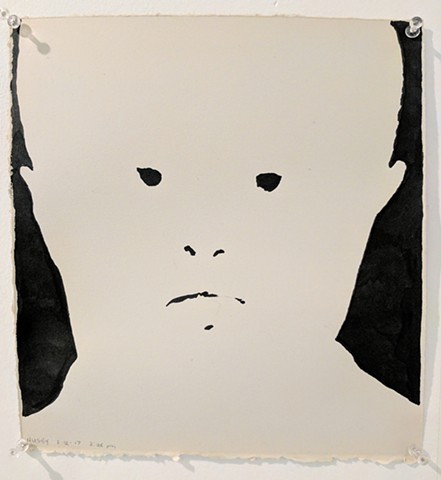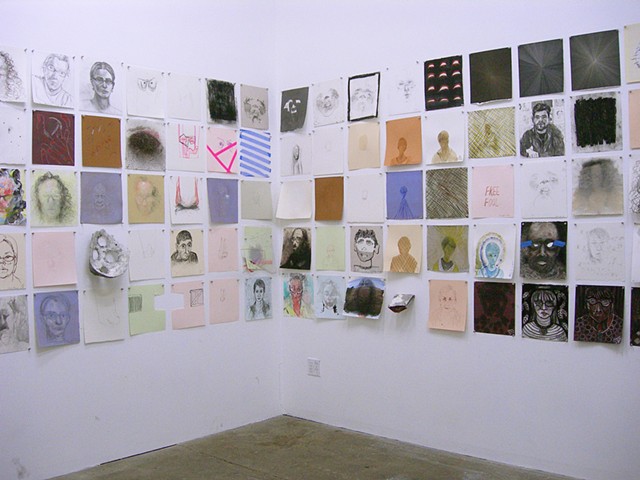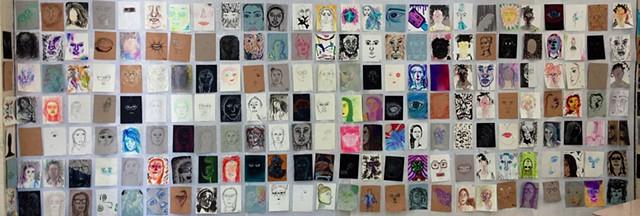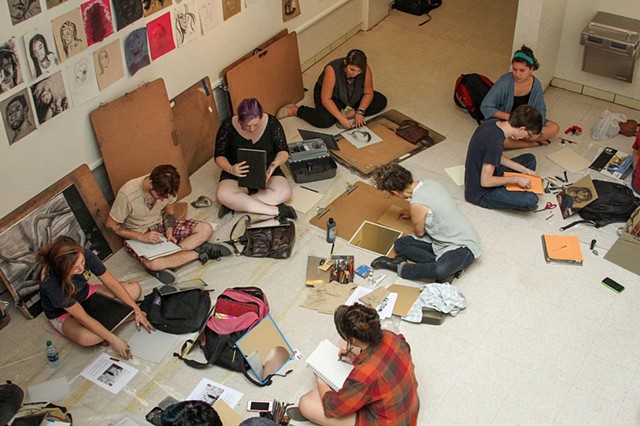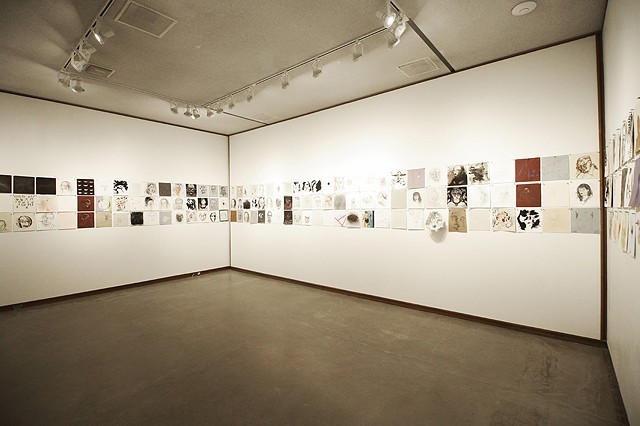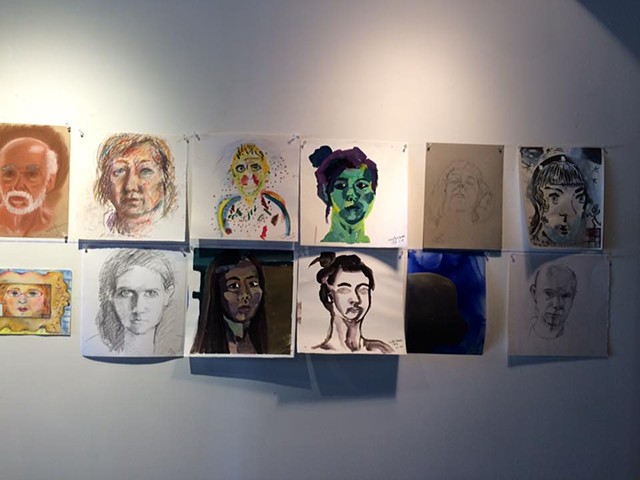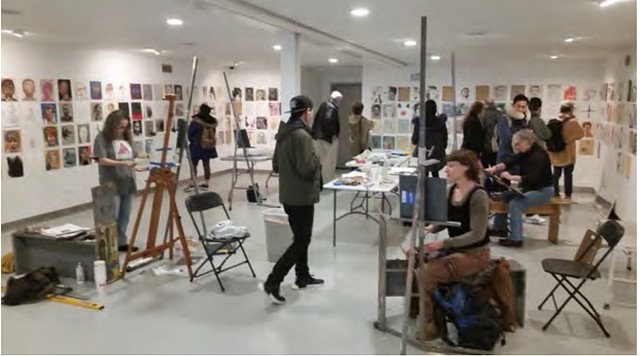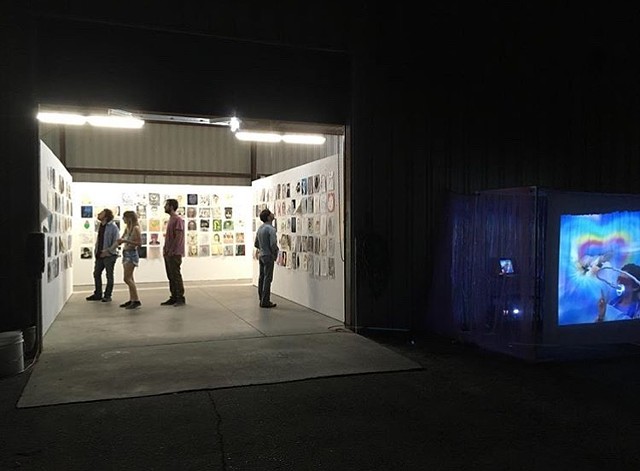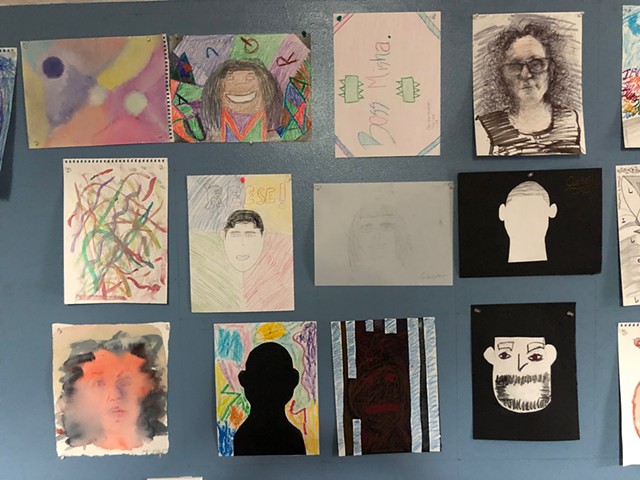The Mind's I
"We are the world that thinks itself. The world is at the heart of our flesh." –Maurice Merleau-Ponty
The project:
The Mind’s I is an ongoing traveling and expanding drawing project meant to generate questions and conversation about perception, self-perception and drawing.
The premise:
Self-perception is a malleable product of the mind. Drawing is fundamentally tied to perception. We perceive and draw with both mind and body, using all our senses, as well as movement, memory and emotion.
The ponder:
Everybody looks in mirrors. Everybody draws. What happens if we do this together?
The process:
I draw in an exhibition space, looking in a mirror, and invite a wide range of artists to join me and do the same (although some ditch the mirror). As we finish drawings we hang them. The drawings converse on the wall, and we converse as we draw. In the end, the walls are covered. The installation becomes an exhibition.
The rules:
1. The artists define perception as they wish, self-perception as they wish, and drawing as they wish.
2. The size of the drawings must not exceed 12” x 12”.
3. The experience must be unmediated by photography or computers.
The archive:
Participating artists can donate drawings to The Mind’s I Archive, from which additional exhibitions will be curated. The complete archive will be donated to a museum or museums.
Thoughts and Questions:
Everyone looks in mirrors, and everyone draws. We innately recognize and scrutinize our own reflections; and as soon as we can pick up a crayon, we make marks—we draw. Both these actions tend to be done privately. What happens if we do them together?
What happens when a range of artists, differing in discipline/media, philosophy, ethnicity, race, gender, sexuality, age, region, status—economic, art world, etc.—all draw together?
How do different artists deal with self-perception, self-scrutiny and self-invention? What does it mean to perceive—to see, feel, touch, move, remember and interpret? What is the relationship between self-reflection, self-expression and self-representation, between internal feeling and external appearance? What is the difference between vanity and self-consciousness? How does drawing connect to and enhance perception? Can the act of drawing together break down barriers? What happens when the private experience of self-scrutiny is shared?
And if the result is a large archive of drawings holding work by these artists, can all of them step over the art-world velvet rope? Can this be a leveler? Can this work, as part of this inclusive archive, find a home in major institutions?
And finally, can this process eventually extend beyond artists? If everyone draws and looks in mirrors, how inclusive can this conversation become? Where will it lead?
